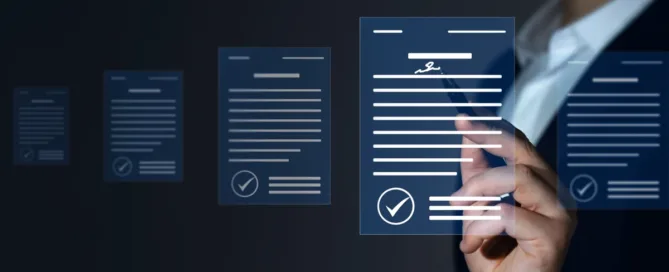Global markets require global collaboration. The landscape of the Gulf and MENA region has undergone a tremendous shift over the past few decades. What was once a relatively slow market has now transformed into the business world’s focus. This transformation has not come easy, though. It has taken the will and strength of various stakeholders and visionaries. The GCC and MENA’s present and future prosperity relies heavily on the constructive collaboration between diverse and varied stakeholders, including governments, businesses, and individuals.
With so much going on and at stake, governments and stakeholders often find themselves isolated from each other. Each interest group ends up working in divergent directions and in isolation. This makes it harder for decision-makers to correctly perceive the bigger picture due to a lack of data and communication.
What are the most common issues faced by governments in large-scale projects?
With most large projects usually being outsourced to the private sector, it becomes challenging for a disjoint group to find a shared repository and a single source of truth. This lack of communication and collaboration negatively affects progress in several ways, such as those listed below:
- No Sharing of Information.
Information on critical issues, events, and outcomes becomes inaccessible due to a lack of unified communication and reporting infrastructure. - No Record of Correspondence
Communication between various stakeholders becomes lost under a pile of paperwork with no means to reference or track the progress of critical conversations. - No Delegation of Tasks
It becomes challenging to delegate tasks effectively, decreasing the efficiency and increasing the costs of projects. - No Standard Procedures
A lack of standardized processes and procedures reduces productivity, breeds issues and creates inconsistencies in outcomes and deliverables. - No Process Optimization
The lack of consolidated data makes it challenging to optimize workflows and operations and gain any insights that can help in improving outcomes.
A lack of communication, unified processes, resources, and collaborative tools makes managing large-scale projects a big challenge. Paired with the already tricky landscape of private-public partnerships, the resulting environment stifles meaningful progress across the board.
Is there an effective solution to these challenges? Yes!
How can government departments collaborate effectively between each other and with the private sector?
Fortunately, organizations worldwide are rapidly transitioning to more collaborative and streamlined work through the help of technology. The transition from traditional means of collaboration to better-optimized workflows powered by Artificial Intelligence and Machine Learning has made collaborating much easier.
From real-time updates and management of workloads to offering a trackable repository of information and correspondence, the “Smart Collaboration” methodology is taking over the public and private sectors.
What do smart collaboration tools offer?
The Smart Collaboration ideology focuses on enabling more transparent access and greater integration of communication channels to provide a more streamlined business environment. Software that offers such capabilities makes it easier for distinct and diverse individuals, sectors, and industries to connect and share information through various channels.
The host of features standard among such software can include the following:
- Collaborative Office Suites
A centralized workspace enabling users to work collectively on different types of documents and share them across different channels. - Meeting and Correspondence Management
Tools enabling better tracking, scheduling, and management of meetings, agendas, correspondence and documents that allow effective decision-making. - Project Management Dashboards and Tools
Resources that enable project managers and supervisors to delegate tasks on a large scale to separate teams and track progress through a simple and intuitive dashboard. - Resource Repository
A collective repository of documents, resources and knowledge that enables all involved parties to easily find, share, and publish information. - Procurement and Logistics
Tools for procurement, logistics management an effective resource usage across the supply chain.
What are the features of a smart collaboration framework?
These tools and resources offer an effective method for managing and collaborating on large-scale projects and partnerships. No matter the software used, the “Smart Collaboration” platform focuses on providing the following capabilities:
- Real-Time and A-Sync Collaboration
A method to communicate and share critical information in real-time and provide access to communication history, versioning, and updates. - Business Intelligence and Decision-Making Tools
A method to enable more transparent reporting that provides insights for more intelligent decision-making. - Secure Remote Work Infrastructure
A secure platform that can be accessed remotely through various devices while keeping all communication and information safe. - Trackable Repository for Documentation
A method to collect, curate, and share documentation, correspondence, reports, or any other necessary information in a standardized manner. - Transparency to Enable Good Governance
A framework built to enable better governance and compliance through increased transparency, accuracy, and access to data and resources. - Increase Cost-Effectiveness Through Better Efficiency
A method to increase efficiency by standardizing and unifying processes and communication that lowers costs and time requirements. - Optimize Workflows Using Advanced Artificial Intelligence
Additionally, the framework builds on the concept of artificial intelligence and machine learning to enable more in-depth insights into processes, further enabling better optimization.
How to utilize the smart collaboration framework?
Governments and private sector companies can benefit significantly by incorporating a shared framework for Smart Collaboration. Various global tools and resources, such as the Tarasol Smart Collaboration Platform, have begun capitalizing on these concepts. Such tools can significantly benefit the long-term sustainability and continued effectiveness of large-scale projects involving multiple stakeholders.
The pace of development across the GCC and MENA regions requires a transition from the ineffective traditional model of collaboration to the more streamlined and optimized methods provided by the Smart Collaboration framework.
The future belongs to those who can adapt. Transforming existing business processes to meet the fast-paced environment of the decade requires smarter decisions, supported by the Smart Collaboration approach.





